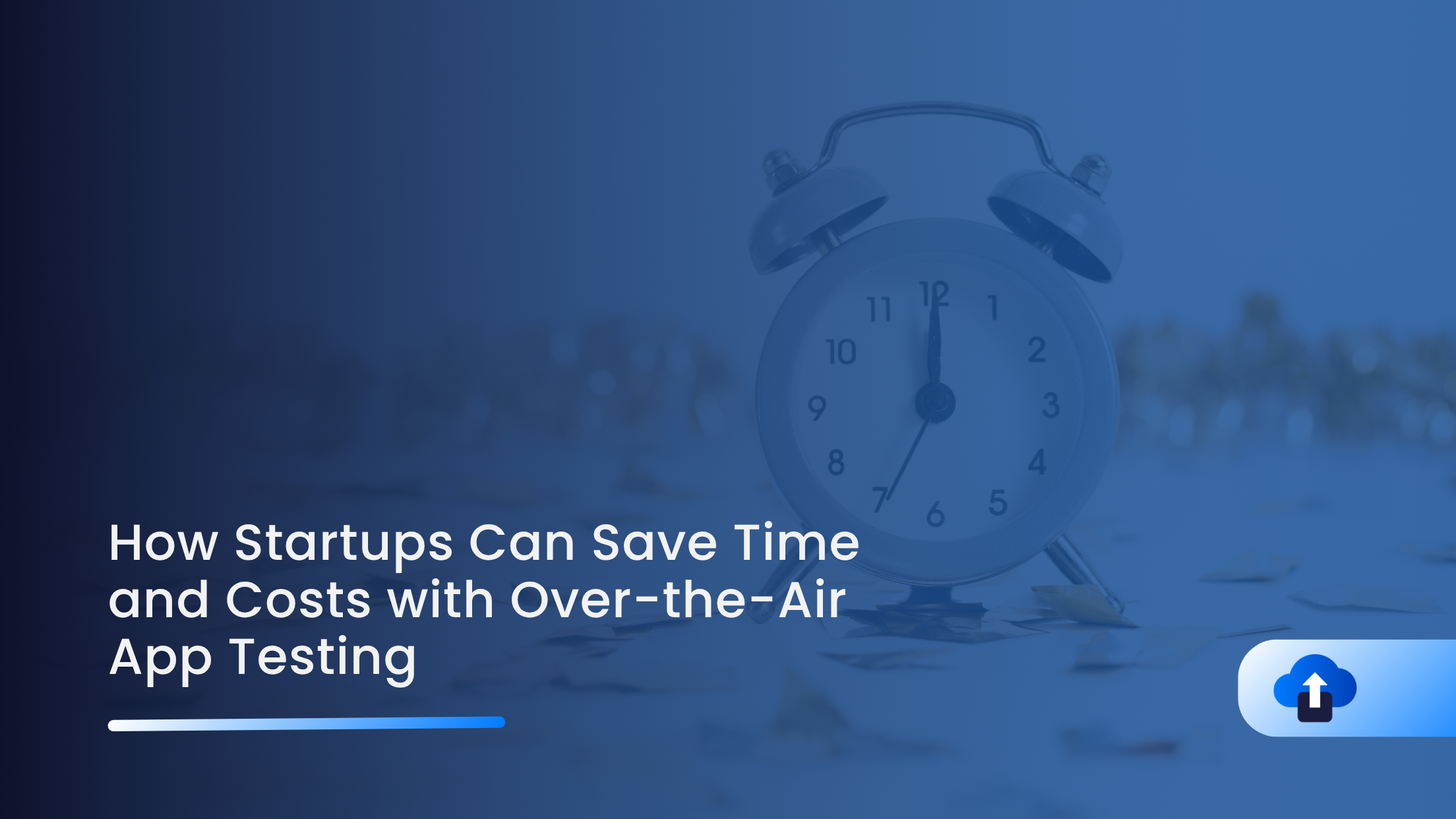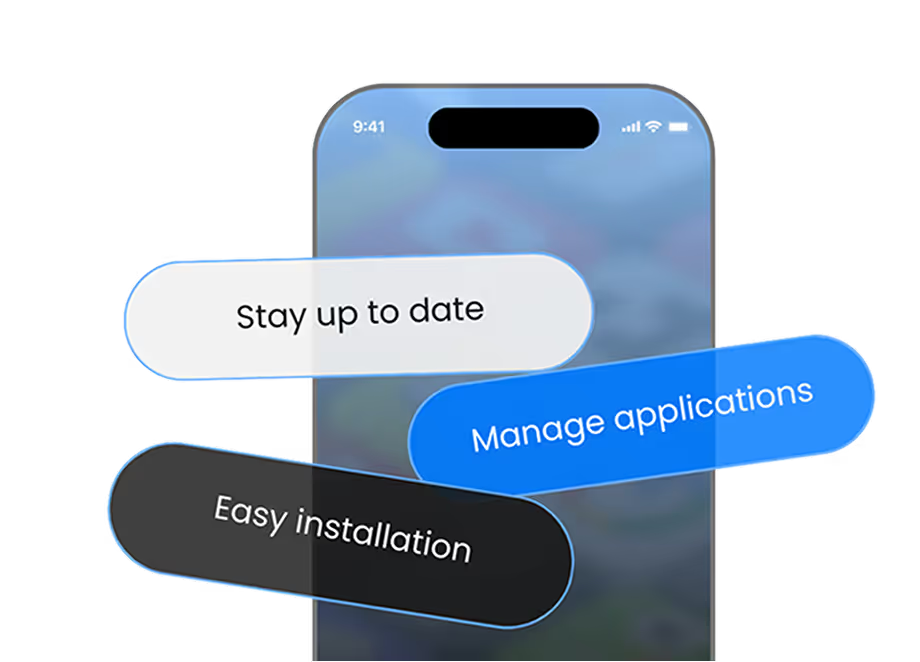
For startups, speed is everything.
Your first users are your test environment, your feedback loop is your lifeline, and your ability to fix, ship, and iterate faster than competitors often determines your survival.
But there’s one problem: the traditional app testing process is painfully slow.
Manually sharing builds, waiting on app store approvals, and coordinating feedback through screenshots and spreadsheets quickly become bottlenecks that burn both time and money.
That’s where Over-the-Air (OTA) app testing changes the game.
With platforms like AppsOnAir, startups can distribute builds instantly, collect real-time feedback, and push new versions to testers or stakeholders, all without touching the App Store or Play Store.
Let’s explore how OTA testing saves startups both time and cost, while building a smoother and more agile development workflow.
The Problem with Traditional App Testing
Most early-stage teams rely on a tangled mix of tools — cloud drives, email attachments, manual APK transfers, and endless Slack messages like “Can you install the latest build?” or “This version crashes, is there a newer one?”
The traditional route also comes with unavoidable hurdles:
- Uploading builds to the App Store or Play Store just for testing requires signing, review, and setup time.
- Testers often struggle to install test builds without developer assistance.
- Collecting bug reports and screenshots becomes chaotic, scattered across channels.
The result?
A feedback cycle that takes days, sometimes weeks, to complete. And in startup time, that’s an eternity.
What is Over-the-Air (OTA) App Testing?
Over-the-Air (OTA) distribution allows developers to upload app builds (IPA or APK) to a secure platform and share them instantly through a link.
Testers or stakeholders can open the link on their device and install the app directly — no cables, no stores, and no complicated provisioning.
In short, OTA testing gives startups the ability to deliver, test, and update faster, without waiting for app store bureaucracy.
How OTA Testing Saves Startups Time
1. Instant Distribution
Uploading your build once to AppsOnAir instantly generates a shareable link.
Developers can send this to testers, clients, or QA teams; no need for devices to be connected via USB or listed in provisioning profiles.
This means you can push builds in minutes, not hours.
For startups juggling tight deadlines, every saved hour compounds into faster releases and earlier launches.
2. No More App Store Delays
Testing through the App Store means waiting for beta approvals (TestFlight) or dealing with Google Play’s limited internal testing setup.
With OTA testing, there’s no waiting period.
You can deploy new versions instantly, even multiple times a day, without resubmission.
Startups benefit from continuous iteration, something store reviews simply can’t support.
3. Real-Time Feedback Loops
Feedback shouldn’t require meetings or screenshots buried in chats.
With AppRemark by AppsOnAir, testers can simply shake their device to capture a screenshot, annotate bugs, and submit feedback directly to your dashboard.
No confusion. No delays.
Your developers get immediate, context-rich reports that can be acted on instantly — shortening the QA cycle dramatically.
4. Simplified Version Control
When you’re iterating fast, managing multiple builds can become a mess.
Which one is the latest? Who’s testing what version?
With OTA tools like AppsOnAir, every uploaded build is automatically versioned and logged.
You can track installations, update testers instantly, and retire old builds to prevent confusion.
That’s hours of coordination saved each week.
How OTA Testing Cuts Costs
1. No Dedicated QA Infrastructure Needed
Instead of investing in costly internal distribution servers or manual device setups, OTA testing platforms provide everything in the cloud.
Startups can onboard testers quickly and get real-world testing across devices — without maintaining extra infrastructure or staff.
2. Lower Developer Hours
Manual distribution, troubleshooting installation errors, or waiting for app store approvals all add up in man-hours.
By automating distribution and feedback, OTA platforms cut developer time wasted on logistics by up to 40%, freeing them to focus on product improvements instead.
3. Reduced Launch Risk
When bugs slip into production, they cost 10x more to fix.
OTA testing ensures faster, broader testing before a public release, catching critical issues early and preventing rejections or bad reviews post-launch.
This not only saves money but also protects your brand reputation when it matters most.
Why AppsOnAir Is Built for Startups
Startups thrive on agility, and that’s exactly what AppsOnAir delivers.
Here’s how it empowers teams to test smarter:
- Real-Time Over-the-Air Distribution: Upload your builds and share instantly with testers or clients.
- Integrated In-App Feedback (AppRemark): Capture screenshots, notes, and context right from the app.
- Team Collaboration: Manage multiple members and projects in one unified dashboard.
- Unified Install Page for iOS & Android: Dedicated install links for iOS and Android — no confusion, no setup errors.
- CodePush Integration: Push live React Native updates instantly without App Store delays.
In essence, AppsOnAir replaces 3–4 tools with one seamless workflow — helping startups save time, streamline QA, and ship updates faster.
Conclusion
For startups, time is money, and both are too precious to waste on slow, manual testing cycles.
Over-the-Air app testing with AppsOnAir helps founders, developers, and QA teams eliminate friction, reduce costs, and build better products, faster.
It’s simple, scalable, and startup-friendly.
Because in 2025, speed isn’t optional, it’s survival.















